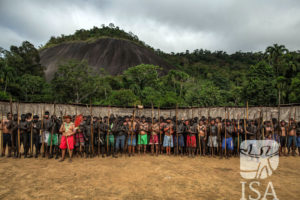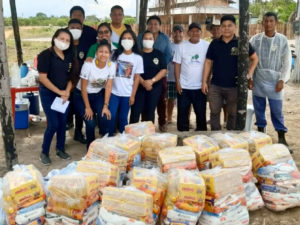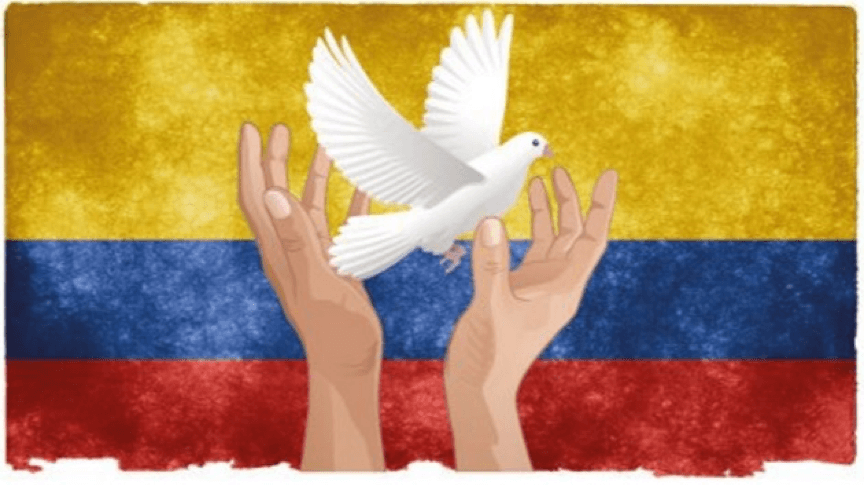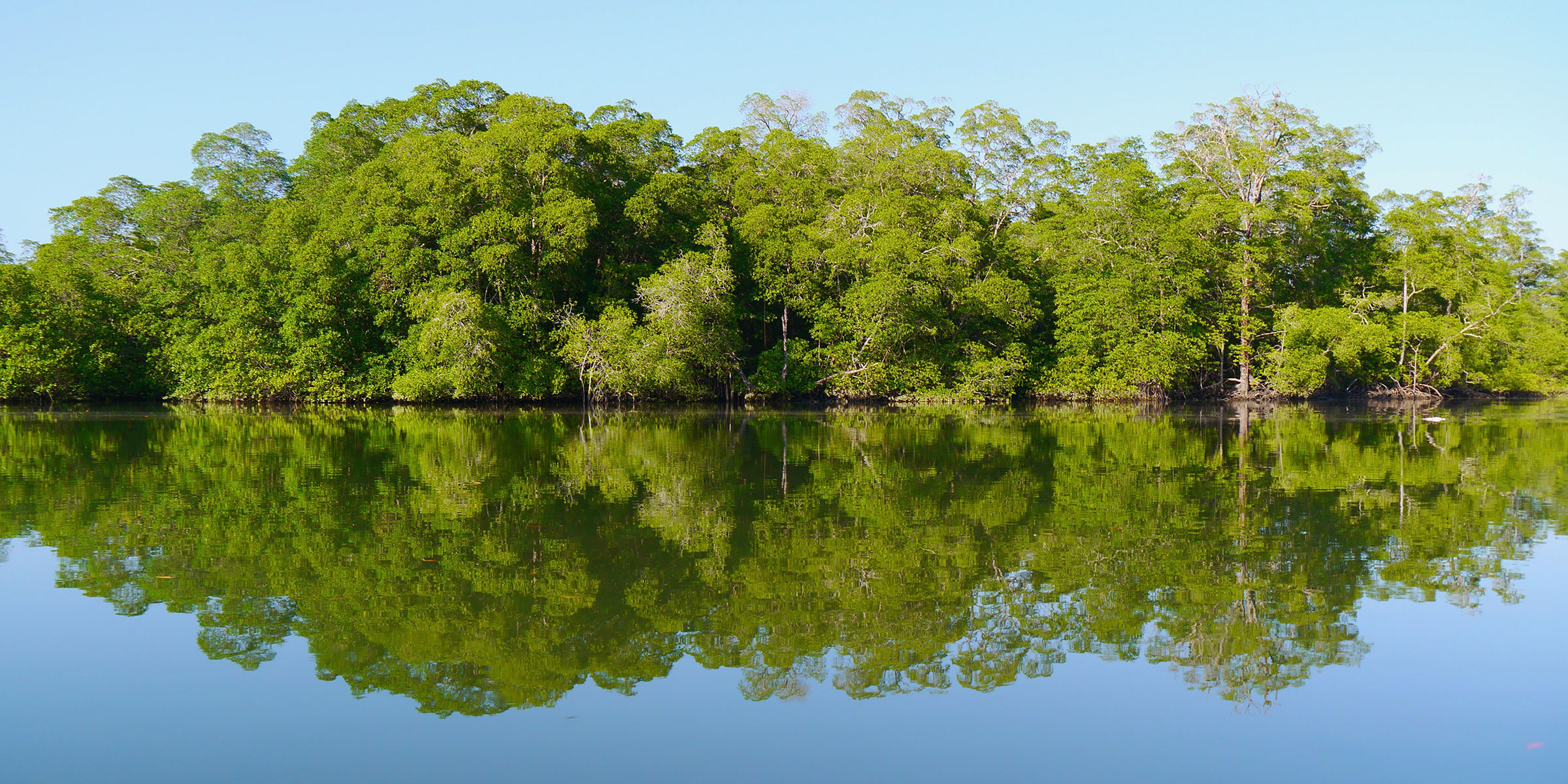Indigenous Communities Worked Hard for Peace in Colombia
By Mia Mayixuan Li
After 52 years of armed conflict and almost four years of peace negotiations, on August 24th, 2016, the Colombian government and the Revolutionary Armed Forces of Colombia (FARC) reached a definitive peace agreement, ending the longest-running conflict in Latin America. This protracted civil war, which has created close to 6 million internal refugees and an estimated 220,000 deaths, figures as one of the bloodiest conflicts in the Americas — and can at long last be put to an end, if the peace accord is ratified by popular vote come October 2nd.
FARC, Drug-Trade, and Displaced Indigenous Communities
The civil conflict dates back to 1964, the year the FARC was officially founded. With a Marxist ideology and an intention to overthrow the government, the left-wing rebel group frequently attacked Colombian police and military forces, blew up pipelines and electricity pylons, kidnapped thousands of people for ransom, and levied “taxes” in the countryside for “protection” services. Starting in the 1980s, the FARC gradually involved itself in the illicit narco-trafficking to finance its armed activities. From a ten percent per kilogram tax on coca in 1980 to complete control over 400,000 acres in 2000 capable of producing 680 tons of cocaine, it was not long before the FARC grew into one of the world’s richest and most dangerous guerrilla armies.
When the drug-trade proved to be the most lucrative and persistent funding source for the FARC, heavily armed rebels increasingly fought for control over coca-growing and resource-rich areas (oil, wood, rare minerals), as well as smuggling routes. These strategically important territories largely belonged to indigenous communities; the FARC appropriated their land and turned their homes into battlefields.
Disproportionately affected by the fighting between the guerillas and paramilitaries, such as the United Self-Defence Forces of Colombia (AUC), native peoples were constantly caught in the crossfire. Indigenous leaders were gunned down by insurgents, youths were forcibly recruited to join the war, and countless others were internally displaced from their land. According to the Office of the UN High Commissioners of Refugees (UNHCR), “Colombia had the world’s largest internally displaced population, and nearly one-third of the country’s indigenous groups are now at risk of extinction as a result of armed conflict.”
They Were Fighters
In the face of this violence, indigenous communities refused to sit idle. In fact, the indigenous response in Colombia has been highly unified and active since 1971. Indigenous leaders have been fighting against militarization, economic exploitation, environmental degradation, and territory encroachment, as it exists at the local, regional, and national levels. Though the movement is far from homogenous, the indigenous groups consider themselves as a part of the Colombian multicultural society. Leaders have insisted on having a voice in the broader political arena. Historically, they have worked to communicate and cooperate with other social groups, to create coalitions and address problems democratically.
This activism and demands for the legal right to their homes frequently led indigenous leaders to be targeted by the FARC, the right-wing paramilitaries, and sometimes, even by the government.
Land Issue: the heart of the conflict
The peace accord contains six key components, emphasizing land reforms, political participation, illicit economy, disarmament of the rebels, victims’ rights, and the implementation of the peace deal. The ownership and occupation of land has always been at the heart of this war and the peace negotiations.
Land distribution has historically been highly unequal in Colombia. Approximately 1% of Colombians own 42.8% of the land. One of the FARC’s primary goals was to initiate land reforms. Yet, this civil conflict further exacerbated mass land dispossession and appropriation.
Indigenous people understand their relationship to the land as commensal. Instead of a place for massive scale of agricultural and economic development, indigenous people see their land as a sacred home, and as an essential part of their identities. Indigenous groups form unique spiritual, social, and cultural connections to the land which sustained their lives for generations.
In the past, displaced indigenous communities have fought to reclaim their land. The Colombian government indeed passed a Victims and Land Restitution Law in 2012 in effort to provide a response to the mass displacement. While the land restitution and reparation program were implemented to return illegally acquired land to displaced victims of the armed conflict, these measures have moved very slowly and only granted land titles to certain eligible groups. As most of the indigenous people do not have the original paperwork to begin with, relatively few have reclaimed legal ownership over their land.
Privatization vs. Collective Rights of Indigenous Communities
The long history of the Colombian government’s failure to return land to its rightful occupants has made indigenous communities suspicious about the new land reforms in the peace accord. According to Mario Murillo of Hofstra University and author of Colombia and the United States: War, Unrest, and Destabilization, there is a broad cross-class social support from indigenous communities, unions, progressives, and students to end this conflict; however, they are skeptical about the government’s economic and social agendas, particularly on land reform.
Many positive proposals were included in the new land reforms. The government will protect property rights and grant land titles to displaced victims; it will facilitate rural economic development, provide credits for small farmers, build irrigation systems, and improve infrastructures and roads to transport agricultural products into markets; and it will support afro-colombians and indigenous people to engage in autonomous economies. The potential serious paradox is that all these economic developments suggest an accelerated privatization of land, which will conflict with the collective land rights of indigenous communities. Land seized for mass scale of agriculture investments and industrial schemes, cannot also be given back to displaced victims. There are concerns new land reforms might even reverse many of the gains indigenous communities fought to achieve.
Indigenous communities already fight against the destruction of the rainforest due to intensive farming, mining and palm oil; it remains to be seen if the Colombian government can both accelerate rural economic development and keep its promises to protect the collective land rights of indigenous communities.
The Future
While the former president, now senator Álvaro Uribe is leading an opposition campaign consisting of conservative right-wing politicians and businessmen, the polls and social media sites show overwhelming support for the approval of the peace agreement. It’s implementation will be difficult. Despite these problems, the peace process will put an end to 52 years of war, and the last armed conflict in the Americas, giving hope to the indigenous communities that have too long borne the brunt of war.
Read More

Murder of Two Yanomami by Illegal Miners Heightens Fears of Renewed Cycle of Violence in the Brazilian Amazon
The murders reinforce the need for the Brazilian government to immediately expel the more than 20,000 miners illegally operating on Yanomami land.

Miners Out, COVID-19 Out: The Yanomami and Ye’Kwana People of the Brazilian Amazon Launch a Global Campaign to Expel Miners From Their Territory
Indigenous leaders demand the urgent removal of 20,000 illegal gold miners from their lands to prevent the spread of COVID-19

Voices from the Ground: COVID-19 Response in Roraima, Brazil
An interview with the Legal Advisor for the Indigenous Council of Roraima about adressing COVID-19 in his territory.
Support Our Work
Rainforest Foundation US is tackling the major challenges of our day: deforestation, the climate crisis, and human rights violations. Your donation moves us one step closer to creating a more sustainable and just future.
[/et_pb_text][/et_pb_column][/et_pb_row][/et_pb_section]



